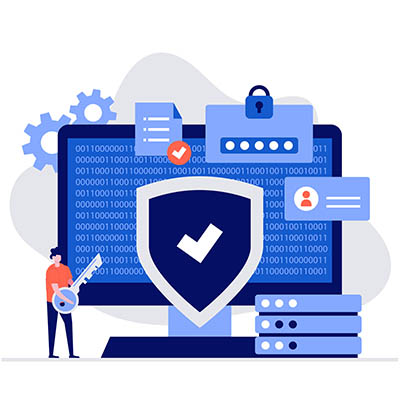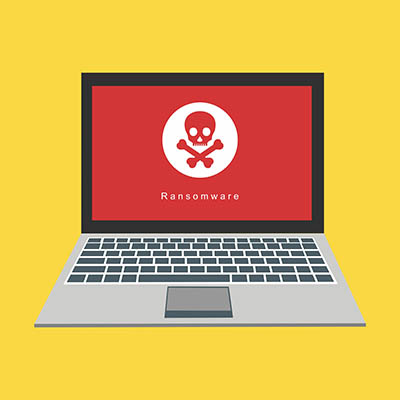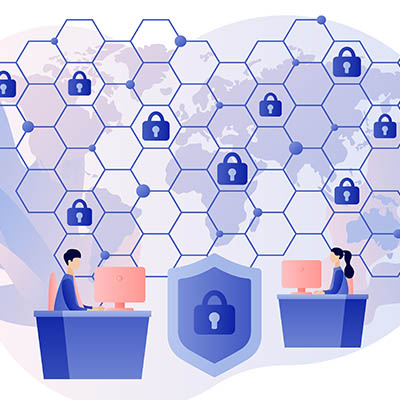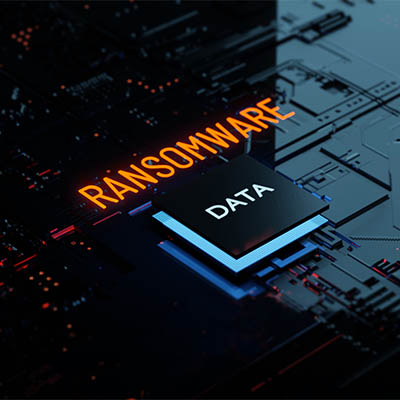Businesses need all of the advantages they can get against threats, especially considering the fact that many of them adapt and evolve in response to advances in security measures. Some security researchers are seeing great success with artificial intelligence measures, a concept that could eventually become the future of network security in the business world.
Dealing with a hacked computer can be scary, but depending on the severity of the hack, you might not even know your infrastructure has been breached until it’s too late to stop it, putting you in a reactionary position. Let’s go over some of the telltale signs of a computer hack and what you should do about it.
Today’s cybersecurity landscape is dangerous, to say the least, prompting many organizations to adopt what is called a zero-trust policy for their security standards. Is a zero-trust policy the best solution for your company’s cybersecurity woes, and how effective is it toward preventing security issues? Let’s take a look.
A recent trend even amongst ransomware threats is that the FBI is issuing warnings regarding how dangerous it is or how difficult certain variants are. This particular threat—the OnePercent ransomware gang—is no exception. Let’s break down what you need to know about the OnePercent Group and how you can prepare to handle attacks not just from this threat, but most ransomware threats.
One of the most difficult things to do in business is to imagine a scenario in which someone you trust puts your organization at risk. We focus so much on the external threats that the internal ones often go unnoticed. How can you make sure that your organization does not fall victim to the several different types of insider threats out there? Let’s take a look.
If you use almost any Apple products, you’ll want to check for and apply an update that will prevent your devices from being spied on. Apple has just issued an emergency software update for a critical vulnerability that was recently discovered. The new updates were pushed out on Monday, September 13th, 2021, and include a major security fix for the Apple iPhone, Apple iPad, Apple Watch, and Apple Mac computers and laptops. The vulnerability is a very serious one known as a “zero click remote exploit.” It allows invasive spyware to infect any of these devices without any sort of end-user action. Whereas the majority of malware requires the user to download something, click on a fraudulent link, join an unsecure network, or hand over a password, this new breed of malware can infect most Apple devices without a single click. Security researchers have traced the spyware back to Israel’s NSO Group, a technology firm that develops remote surveillance spyware. The spyware, called Pegasus, can be deployed to any Apple iPhone, iPad, Apple Watch, or Mac without the user being aware of it, and can allow both governments or criminals to turn on your camera and microphone, record messages, texts, emails, and calls, even if you are using encrypted services. It’s essentially giving the cybercriminal full control over your device without you knowing it. How to Check If You’ve Been Infected by the Pegasus Zero-Click Spyware Here’s the worst part—you’ll never know if you have this on your phone or device. If the spyware is on your device, it’s virtually invisible to you. You won’t see the typical tell-tale signs of an infection, such as strange text messages, suspicious links, or any other notification. It’s simply there, possibly running at any given moment, recording what you are doing and sending everything to NSO Group and their clients. If that’s not bad enough, security researchers believe that this spyware has been around since at least March of 2021, and with more than 1.65 billion Apple products on the market today… Let’s just say we should all be taking this very seriously. Update Your Apple Devices Right Now: Here’s How to Do It Apple iPhone and iPad Before you update, back up your device using iCloud or your computer. Plug your device into power and make sure you are connected to the Internet with Wi-Fi. Go to Settings > General, then tap Software Update. Tap Install Now. If you see Download and Install instead, tap it to download the update, enter your passcode, then tap Install Now. Apple macOS on a Mac Computer Go to the Apple menu in the corner of your screen. Choose System Preferences. Click Software Update. Click Update Now or Upgrade Now. Repeat this process in case further updates are available. For more information, check out Apple’s Update documentation. Apple Watch Connect your Apple Watch to Wi-Fi. Ensure that your watch is at least 50% charged, or plug it in to power. You’ll want to make sure your iPhone is running the latest version of iOS. On your iPhone, open the Watch app and tap My Watch. Tap General > Software Update. Download the update. Wait for the progress wheel to appear on your Apple Watch. It could take several minutes to an hour for the update to […]
You’d think that cybercriminals would use ransomware to target high-profile businesses with loads of money to extort, but this is not always the case. Even a small business can fall victim to these particularly devastating threats. Ransomware, just like other threats out there, has continued to evolve and adjust its approaches based on the current cybersecurity climate, so what are some of the latest developments in ransomware?
Technology has always been ingrained in the operations of businesses to an extent, but it was only recently (in the grand scheme of things) that standard business technology such as desktops, server units, and other computing hardware really started to take off. That said, it’s now a staple, so your organization should be making informed decisions regarding any new hardware that you implement.
To be adept at a task is to say that the one doing the task is a professional, or someone with substantial knowledge that can be used to effectively complete the task. Cybersecurity is one such area where having a considerable amount of knowledge is of particular importance to help navigate the complex environment surrounding it. How can your organization achieve this level of mindfulness and expertise?
The Kaseya ransomware attack targeting VSA servers for approximately 1,500 organizations was another notable attack in a recent string of high-profile ransomware attacks, and while most organizations did what most security professionals recommend and did not pay the ransom, others did not listen. Now those who did pay the ransom are having trouble decrypting their data, and REvil is nowhere to be found to help them in this effort.










